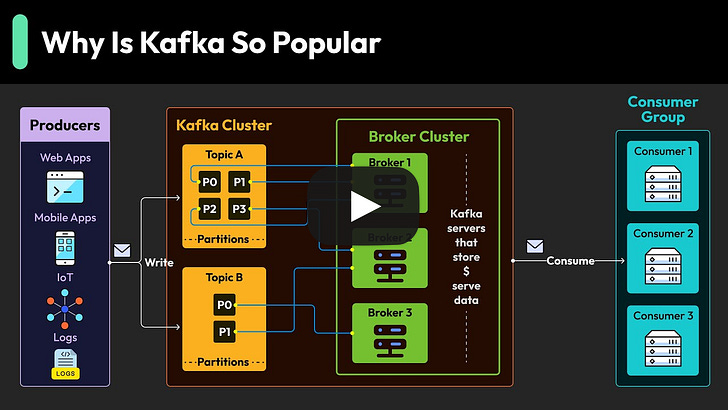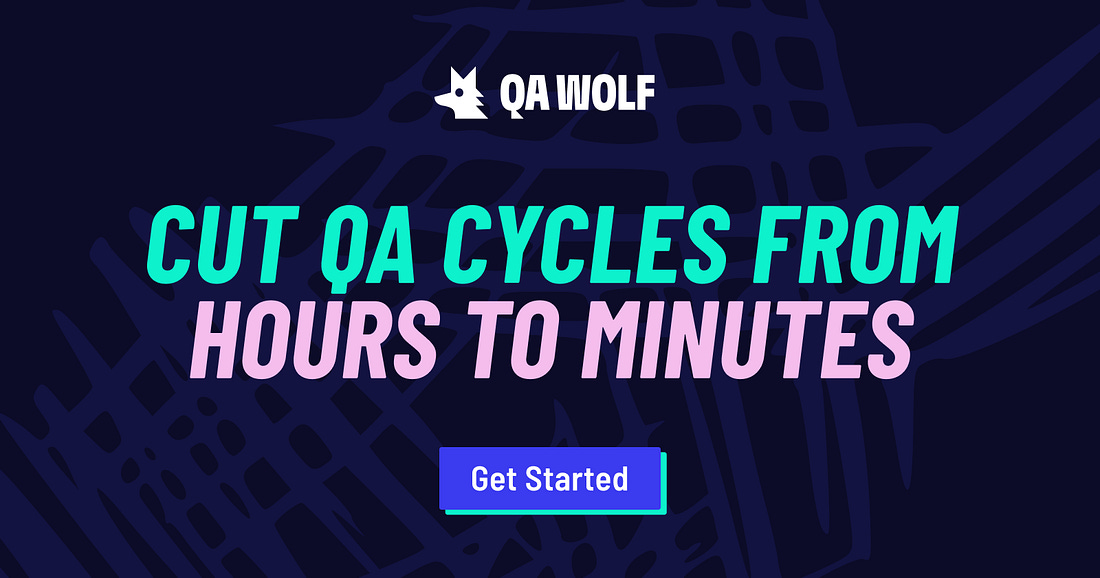|
✂️Cut your QA cycles down to minutes with QA Wolf (Sponsored)
If slow QA processes bottleneck you or your software engineering team and you’re releasing slower because of it — you need to check out QA Wolf.
QA Wolf’s AI-native service supports web and mobile apps, delivering 80% automated test coverage in weeks and helping teams ship 5x faster by reducing QA cycles to minutes.
QA Wolf takes testing off your plate. They can get you:
Unlimited parallel test runs for mobile and web apps
24-hour maintenance and on-demand test creation
Human-verified bug reports sent directly to your team
Zero flakes guaranteed
The benefit? No more manual E2E testing. No more slow QA cycles. No more bugs reaching production.
With QA Wolf, Drata’s team of 80+ engineers achieved 4x more test cases and 86% faster QA cycles.
This week’s system design refresher:
System Design: Why is Kafka Popular? (Youtube video)
How to Design Good APIs
Big Data Pipeline Cheatsheet for AWS, Azure, and Google Cloud
How to Learn AWS?
The AI Agent Tech Stack
How to Build a Basic RAG Application on AWS?
Types of Virtualization
SPONSOR US
System Design: Why is Kafka Popular?

How to Design Good APIs
A well-designed API feels invisible, it just works. Behind that simplicity lies a set of consistent design principles that make APIs predictable, secure, and scalable.
Here’s what separates good APIs from terrible ones:
Idempotency: GET, HEAD, PUT, and DELETE should be idempotent. Send the same request twice, get the same result. No unintended side effects. POST and PATCH are not idempotent. Each call creates a new resource or modifies the state differently.
Use idempotency keys stored in Redis or your database. Client sends the same key with retries, server recognizes it and returns the original response instead of processing again.Versioning
Noun-based resource names: Resources should be nouns, not verbs. “/api/products”, not “/api/getProducts”.
Security: Secure every endpoint with proper authentication. Bearer tokens (like JWTs) include a header, payload, and signature to validate requests. Always use HTTPS and verify tokens on every call.
Pagination: When returning large datasets, use pagination parameters like “?limit=10&offset=20” to keep responses efficient and consistent.
Over to you: What’s the most common API design mistake you’ve seen, and how would you fix it?
Big Data Pipeline Cheatsheet for AWS, Azure, and Google Cloud
Each platform offers a comprehensive suite of services that cover the entire lifecycle:
Ingestion: Collecting data from various sources
Data Lake: Storing raw data
Computation: Processing and analyzing data


